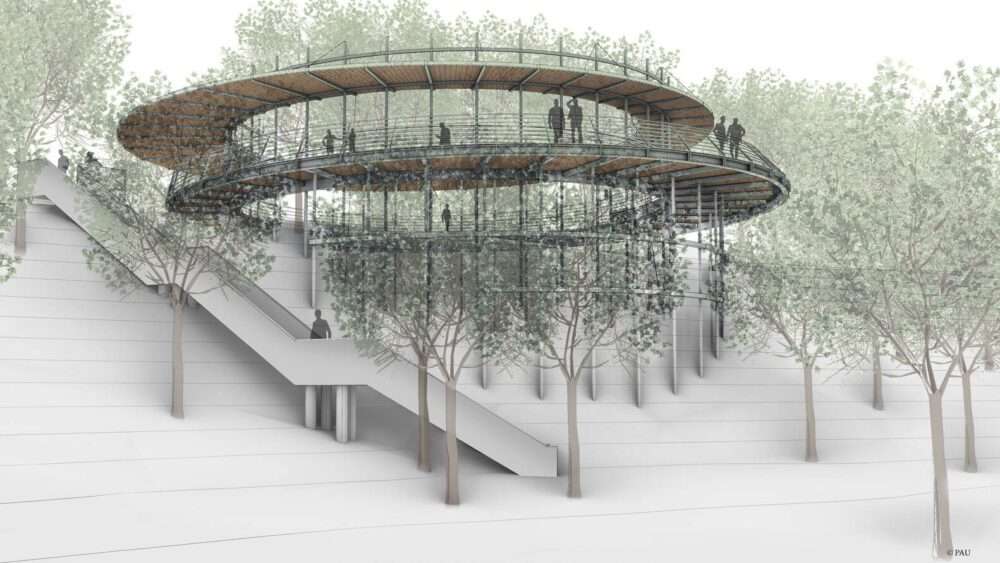Architect Ma Yansong of MAD Architects recently discussed the innovative design approach behind his studio’s first train station project, the Train Station in the Forest, during a talk hosted by Dezeen editor Tom Ravenscroft. This 354,000-square-meter station in Jiaxing, China, is an architectural marvel that seamlessly blends historical elements with contemporary design, creating a space that is both functional and culturally enriching.
Blending Historical and Contemporary Elements
The Train Station in the Forest is notable for its integration of a full-scale replica of a historic station house that originally stood in 1907 but was destroyed by bombing in 1937. This recreated structure forms the north entrance of the station, juxtaposed with modern architectural elements. Yansong emphasized that this combination was integral to the design process, aiming to create a cultural and contextual experience for travelers. He described the fusion as a collage of historical and modern moments coexisting within the same space.
Design Philosophy and Inspiration
Yansong’s design philosophy for the Train Station in the Forest was driven by the desire to make the station experience more than just a transit point. He wanted it to be a place where people could connect with the history and future of Jiaxing. By incorporating traditional elements within a modern framework, Yansong aimed to create a narrative journey for visitors, likening the station to a museum of time where past, present, and future converge.
Challenging Traditional Transport Hubs
In his talk, Yansong critiqued the typical design of large-scale train stations in China, which often feel monumental and impersonal. He noted that these grand structures can be overwhelming and impractical for passengers. In contrast, MAD aimed to create a smaller, more human-scaled station that prioritizes comfort, efficiency, and accessibility. The station’s design addresses the practical needs of travelers while also providing a welcoming and aesthetically pleasing environment.
Innovative Use of Space
One of the station’s most innovative features is its use of space. The transit areas are primarily located underground, freeing up the ground level for public use. This design choice not only enhances the functionality of the station but also integrates it seamlessly into the urban fabric of Jiaxing. On the north side, the station is adjacent to a public park, which has been expanded to create an inviting green space around the entrance. The southern side features a commercial area and landscaped lawns, providing flexible spaces for events and community gatherings.
Creating a Public Space with Emotional Resonance
Yansong stressed the importance of creating public spaces that offer more than just physical utility. He believes that such spaces should foster emotional experiences and community engagement. The design of the Train Station in the Forest reflects this philosophy by incorporating elements that evoke a sense of beauty and openness. Yansong compared the station to cultural venues like opera houses, suggesting that public spaces should provide aesthetic and emotional value, not just serve a single functional purpose.
Conclusion
The Train Station in the Forest by MAD Architects is a groundbreaking project that redefines the concept of a train station. By blending historical elements with contemporary design, it creates a space that is both culturally rich and functionally efficient. The project challenges the traditional model of transport hubs, offering a more human-scaled and accessible design. With its thoughtful use of space and emphasis on community engagement, the Train Station in the Forest sets a new standard for public architecture, demonstrating the potential of design to enhance both the practical and emotional experiences of urban spaces.

Finally, find out more on ArchUp:









